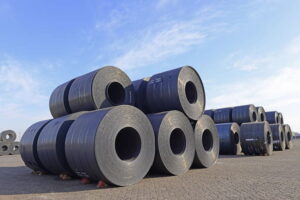The new EU-US trade deal should lead to a normalisation of global trade flows and prices, said participants at the Kallanish Flat Steel 2021 virtual conference on Tuesday.
“The removal of US Section 232 should improve trade flows and improve European steel presence in the North American market. The new trade agreement will be very healthy for the steel sector and the EU economy,” EUROMETAL president Fernando Espada said during the event.
The global market and steel pricing equilibrium should also be supported by the absence of Chinese exports. “Steel prices will see certain fluctuations in the following months, but the cycle of volatility is seen coming to an end. Expected new offers, however, will not be the same as that in 2020,” Espada continued.
Espada believes the European steel market should return to normal by the second quarter in 2022, with the recovery of automotive industry production. “The normalisation of semiconductor supplies will boost car output, and consequently support the normalisation of steel sector demand. The post-Covid-19 situation is moving steel prices to a different range, following a new adjustment mechanism including additional costs and surcharges,” Espada explained.
Meanwhile, Eurofer director of economic and market analysis Alessandro Sciamarelli said the reopening of the US market for European steel will have a positive effect on the sector. “The positive effects will range from the establishment of fair trade, as it possible, to reducing the diversion of the steel flow,” he commented. “Demand is set to improve, so the US is an open gate for European steel.”
According to Sciamarelli, the worst of the economic recession is over, although growth in steel-consuming sectors will remain uncertain in Q1 2022. “Global supply chain bottlenecks and disruptions, as well as shortage of components, rising energy and transport costs impacting the manufacturing sector, and automotive in particular are not expected to ease substantially before Q1,” Sciamarelli predicted.
Inflation has gained ground and reached record highs in many advanced economies in August-September, which may trigger a serious concern in case Central Banks wanted to raise interest rates, he continued.
“The rise in interest rates should be avoided as public support schemes after the pandemic, such as NextGenEU, have created an enormous additional amount of public debt. Eurofer remains positive for 2022, although the market recovery will depend mostly on the macro-economic picture,” Sciamarelli concluded.
Todor Kirkov Bulgaria






